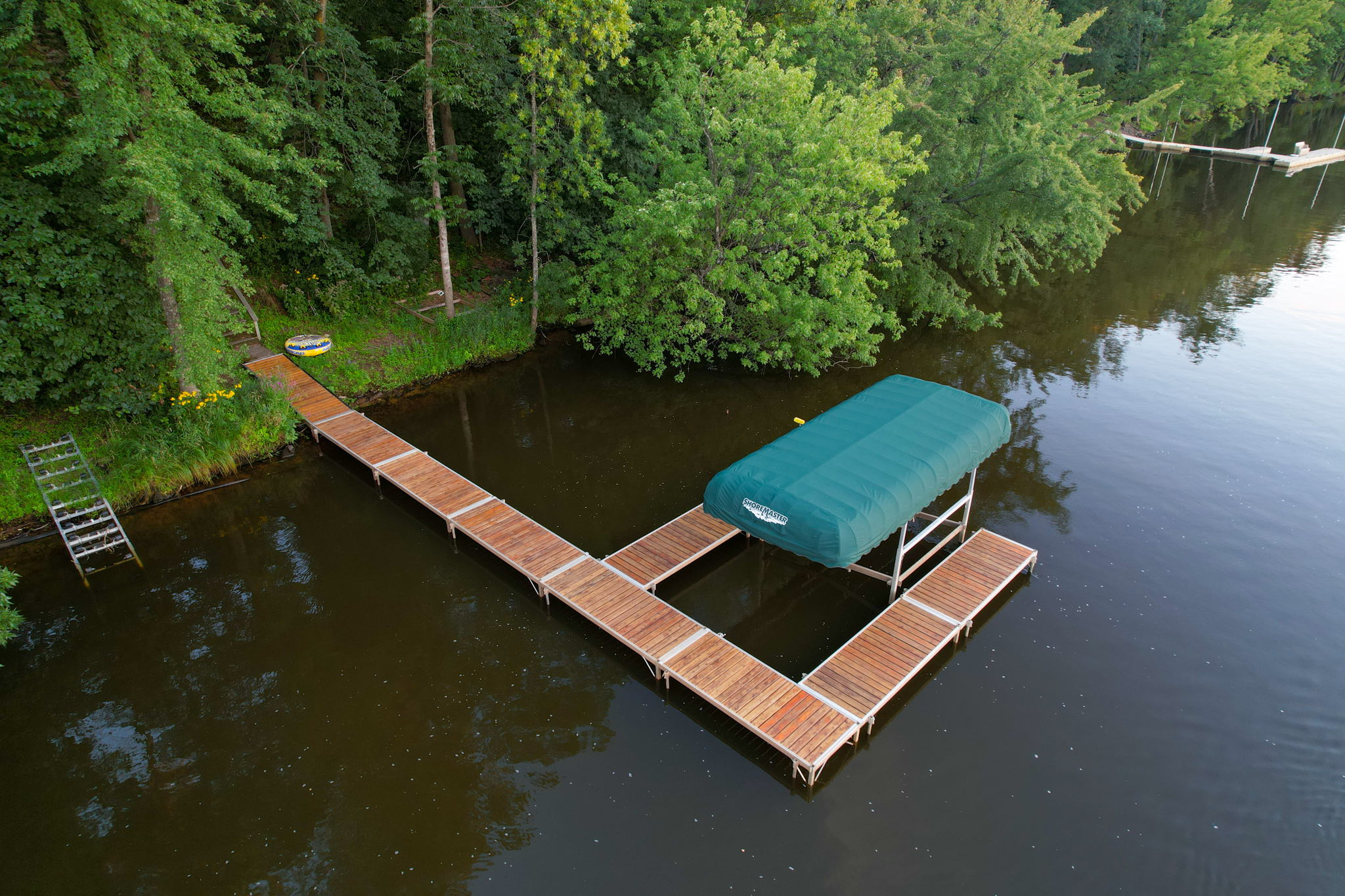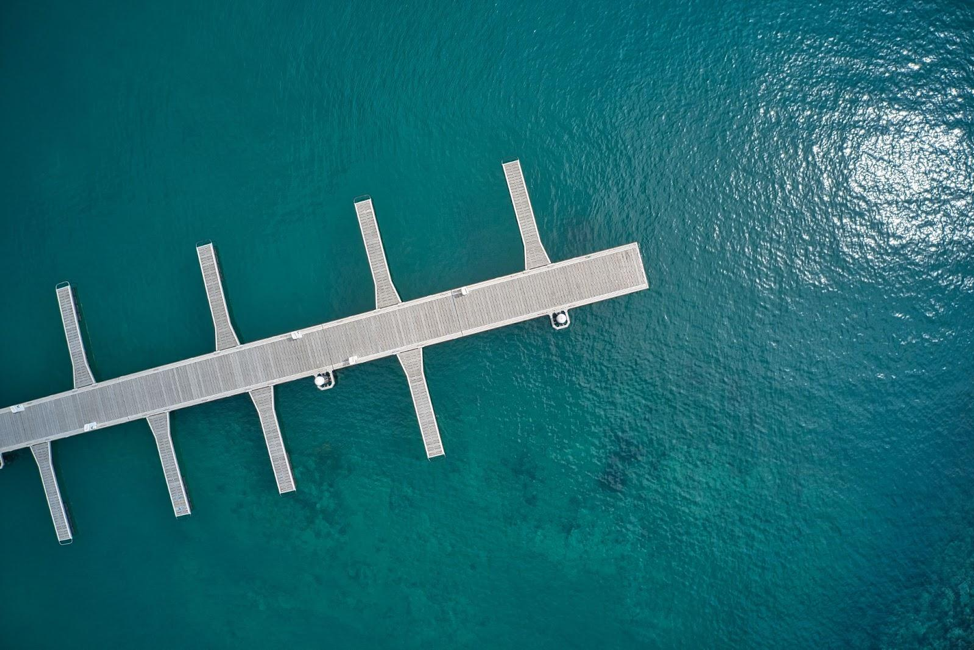Browsing the Options: Choosing the Right Dock Company for Your Floating Dock Job
Browsing the Options: Choosing the Right Dock Company for Your Floating Dock Job
Blog Article
Upgrade Your Waterside With Resilient Floating Docks
Updating your waterfront with sturdy floating docks can dramatically boost both performance and looks, supplying a versatile remedy for different water activities. These frameworks are developed to adjust to changing water levels, guaranteeing safety and accessibility throughout the periods. With a variety of products offered, consisting of low-maintenance choices and traditional timber, selecting the ideal dock can complement your individual style and satisfy practical requirements. Recognizing the nuances of setup and upkeep is vital for ensuring long life and performance. When making this investment?, what factors should you take into consideration.
Advantages of Floating Docks
Floating docks offer a plethora of benefits that enhance their allure for different maritime applications. Unlike conventional set docks, floating docks rise and loss with the tide, making certain regular ease of access for boats and boat regardless of ecological conditions.
Additionally, floating docks are less complicated to transfer and set up, providing adaptability for short-term or seasonal use. Their modular design permits for personalization to fit specific requirements, whether for private marinas, household watersides, or business applications.
Moreover, floating docks develop very little disturbance to the water setting, preserving regional communities and decreasing the possibility of disintegration. They also give boosted security and security for users, as their buoyant nature provides an extra forgiving surface area than rigid structures.
In addition, floating docks can facilitate a diverse series of tasks, such as angling, swimming, and entertainment boating, making them a valuable asset for waterfront advancement. Their adaptability and usefulness make floating docks a recommended selection for a selection of naval tasks.
Choosing the Right Products
Picking appropriate products for floating docks is crucial to their durability, performance, and general efficiency. When selecting materials, consider elements such as environmental exposure, maintenance needs, and architectural honesty. Typical products include wood, plastic, aluminum, and composite alternatives, each offering distinctive benefits and downsides.
Timber, while visually pleasing, requires regular upkeep to avoid rot and degeneration. Pressure-treated wood can enhance sturdiness, however it may still succumb to water damages gradually. Plastic floats, frequently made from high-density polyethylene, are resistant to deterioration and need very little maintenance, making them an attractive selection for low-maintenance applications.
Aluminum is another sensible alternative, understood for its strength and light-weight buildings. It is immune to rust and can hold up against extreme climate condition, although it might be much more pricey than other products. Composite materials integrate the best features of wood and plastic, offering a low-maintenance and resilient choice that imitates the look of wood without the linked disadvantages.
Inevitably, the option of material need to line up with the planned use, ecological considerations, and budget plan constraints, making sure a functional and long lasting floating dock that meets your details needs.
Setup Refine Overview
The effective installment of a floating dock relies upon mindful planning and execution, making certain that it operates efficiently in its desired environment. The initial step entails assessing site problems, consisting of water deepness, shoreline functions, and dominating climate patterns, which will notify the dock style and anchoring system.
Adhering to the website analysis, the following phase is to prepare the floating dock parts. This includes setting up the structure, safeguarding floats, and attaching any type of needed equipment. It is crucial to guarantee that all connections are waterproof and durable to hold up against aquatic problems.
As soon as the dock is assembled, the installation process commences with positioning the dock in the water. This can involve a crane or other lifting equipment, especially for bigger frameworks. Correct placement is essential for functionality and safety.

Maintenance Tips for Long Life
Routine upkeep is vital for ensuring the durability and optimal performance of a drifting dock. To accomplish this, start with routine assessments at least two times a year, focusing on the stability of the dock's framework, including the flotation protection devices and linking equipment. Look for indications of wear, damage, or rust, and resolve any problems promptly to avoid more dig this wear and tear.
Cleaning up is an additional crucial facet of upkeep. Remove debris, algae, and barnacles from the dock's surface area to avoid slippery conditions and preserve visual appeal. Utilize a soft brush and a moderate cleaning agent to stay clear of damaging the dock's materials.
In addition, ensure that the dock is appropriately secured and safeguarded to withstand seasonal changes in water levels and weather condition problems. Check the anchoring system for stability and make modifications as needed.
Enhancing Your Exterior Visual
To produce a visually attractive outside room, including a floating dock can considerably improve the general aesthetic of your waterside property. Floating docks are not only practical however can likewise function as a striking centerpiece that enhances the natural environments - floating docks. Readily available in numerous products and styles, these docks can be customized to match your residential or commercial property's architectural design and landscape
The enhancement of attractive aspects, such as integrated lighting or elegant railings, even more elevates the dock's aesthetic charm. Think about using all-natural wood finishes, which mix effortlessly with the atmosphere, or going with modern-day materials like light weight aluminum or composite outdoor decking that provide a sleek, modern appearance.
Strategically putting planters or seating areas on or around the dock can produce welcoming rooms that urge relaxation and pleasure of waterfront views. Furthermore, incorporating shades and textures that integrate with your landscape will develop a cohesive visual throughout your outside location.

Verdict

Upgrading your waterside with durable floating docks can considerably boost anonymous both functionality and aesthetics, supplying a functional service for different water tasks. Unlike traditional fixed docks, floating docks rise and autumn with Recommended Reading the trend, ensuring constant availability for watercrafts and watercraft regardless of environmental problems.Choosing suitable products for floating docks is vital to their durability, performance, and general effectiveness.Once the dock is set up, the installment procedure starts with positioning the dock in the water.In summary, floating docks offer various advantages, including versatility to water degree adjustments and a selection of material alternatives.
Report this page